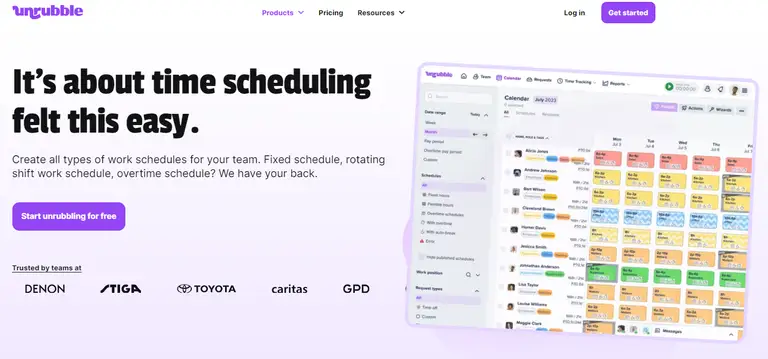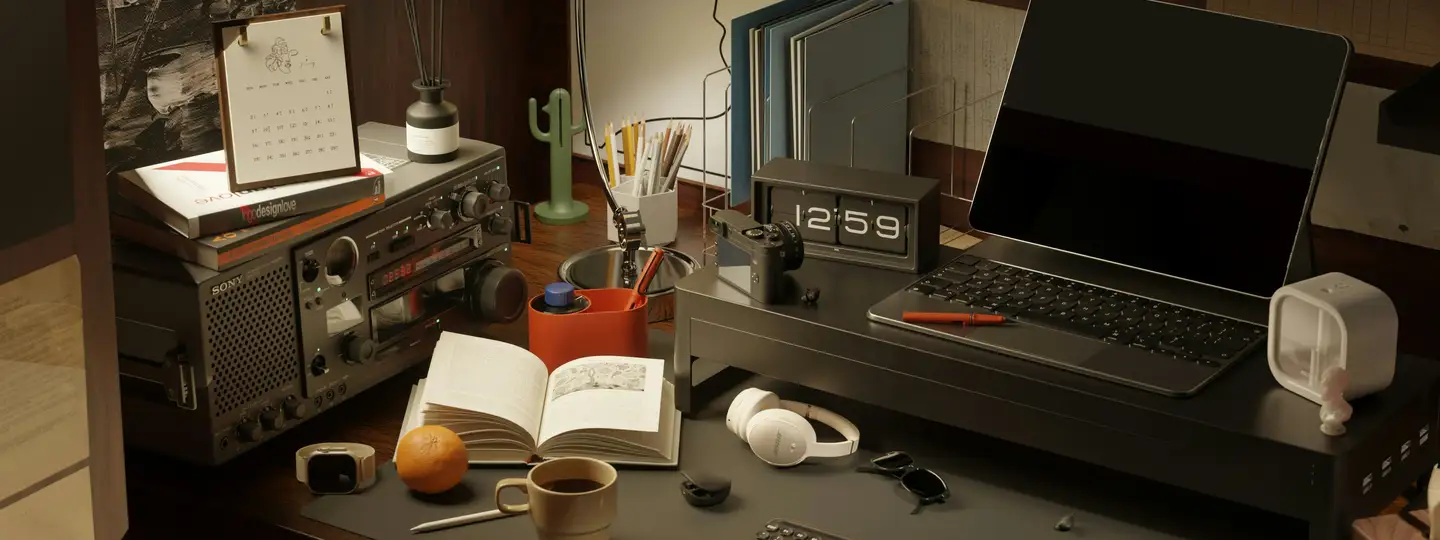So, you need to figure out when your employees should work.
In this guide, we’ll whisk you through 14 different shift types - all so you can understand your options.
Whether you’re aiming for round-the-clock productivity or just want to keep things smooth and simple, we’ve got the perfect shift for you.
What is a shift?

A work shift is a set period of time during which a person works. This can be during the day, evening, or night, and is part of a job schedule.
Work shifts help businesses stay open and productive for longer hours or even 24/7. Different industries use various types of shifts to meet their specific needs and operate continuously.
Do all workplaces work on a shift basis?
No, not all workplaces use shifts. Some workplaces operate only during regular business hours, typically from 9 AM to 5 PM, Monday to Friday.
These include many offices, schools, and some retail stores. However, industries like healthcare, manufacturing, and hospitality often use shifts to stay open longer or around the clock.
This helps them meet customer needs and keep operations running smoothly.
14 types of work shifts you need to know: swing, day, night shifts and more
Understanding different types of work shifts can help you manage your team better and keep your business on top of its game.
From traditional day shifts to overnight graveyard shifts, there are many options to fit your needs.
Here are the 14 types of work shifts you should know about:
Day shift
Typically from 9 AM to 5 PM, the day shift is the most common work schedule. Employees work during regular business hours, so it's easy to coordinate with clients, customers and other businesses. This shift suits those who prefer working during the day and having afternoons and evenings free.
Pros for employers:
- Easy to coordinate with clients and other businesses.
- Simple scheduling with clear work hours.
Cons for employers:
- May limit business operations to standard hours.
- No coverage for evening or night needs.
Pros for employees:
- Predictable schedule with evenings free.
- Aligns with most social and family activities.
Cons for employees:
- Morning traffic and commute can be stressful.
- Less flexibility for personal appointments during the day.
Example:
At GreenTech Solutions, most employees work the day shift from 9 AM to 5 PM. Sarah, a project manager, coordinates with clients and her team during these hours. She finds this schedule perfect for having evenings free to spend time with her family and pursue hobbies.
Night shift
Usually starting around 11 PM and ending around 7 AM, the night shift is essential for businesses that operate 24/7. Employees working this shift are often referred to as night owls. This shift can be quieter, with fewer interruptions, but it can be challenging because of the late hours.
Pros for employers:
- 24/7 business operations.
- Can cater to night-time customers or needs.
Cons for employers:
- Higher costs due to night shift pay.
- Potential for lower employee morale and productivity.
Pros for employees:
- Quieter work environment.
- Higher pay due to night shift differentials.
Cons for employees:
- Disrupts natural sleep patterns.
- Social isolation from working opposite hours to most people.
Example:
At NightGuard Security, employees like John work the night shift, starting at 11 PM and ending at 7 AM. John patrols the premises to see if everything is safe and secure. As a night owl, he enjoys the quiet environment and the higher night shift pay.
Swing shift
Commonly from 4 PM to midnight, the swing shift covers the late afternoon to evening period. It bridges the gap between the day and night shifts. This shift is ideal for businesses that stay open late, like restaurants and retail stores.
Pros for employers:
- Extends business hours into the evening.
- Covers peak evening times for customer service.
Cons for employers:
- Requires coordination with day and night shifts.
- Employees may need more support during transitions.
Pros for employees:
- Avoid early mornings.
- Free time during the day before work starts.
Cons for employees:
- Less evening time for social activities.
- Can interfere with family routines.
Example:
Bella’s Bistro is a busy restaurant that stays open late. Employees like Maria work the swing shift from 4 PM to midnight. This shift is great for Maria as she helps serve the dinner crowd and keeps the restaurant running during peak evening hours.
Split shift
In a split shift, the workday is divided into two or more parts, often with a long break in between. For example, an employee might work from 7 AM to 11 AM, take a break, and then work again from 4 PM to 8 PM.
This shift can help cover busy periods but requires careful planning to manage the long break in the middle of the day.
Pros for employers:
- Covers busy periods more efficiently.
- Flexibility to manage peak hours.
Cons for employers:
- Complex scheduling and payroll management.
- Can be hard to find employees willing to work split shifts.
Pros for employees:
- Break in the middle of the day for personal errands.
- Potential for higher overall pay with split shifts.
Cons for employees:
- Long break can be inconvenient.
- Difficult to maintain work-life balance.
Example:
At Bright Kids Daycare, the split shift helps manage busy drop-off and pick-up times. Emily works from 7 AM to 11 AM, takes a long break, and then returns from 4 PM to 8 PM. This setup helps cover the peak times when parents drop off and pick up their children.
Graveyard shift aka third shift
Also known as the third shift, the graveyard shift typically runs from midnight to 8 AM. This shift is ideal for businesses that need to stay open all night, like hospitals and 24-hour convenience stores.
Workers on this shift often enjoy quieter working conditions but must adjust to working through the night.
Pros for employers:
- Business remains operational all night.
- Fewer interruptions equals continuous work.
Cons for employers:
- Higher wages for night work.
- Difficult to maintain employee morale.
Pros for employees:
- Less supervision, leading to a more relaxed atmosphere.
- Increased pay rate for night hours.
Cons for employees:
- Health issues related to disrupted sleep cycles.
- Limited social life due to working nights.
Example:
At All-Night Mart, the graveyard shift is essential. Alex starts his shift at midnight and works until 8 AM, restocking shelves and helping late-night shoppers. He enjoys the calm atmosphere and the extra shift pay.
12-Hour shift
In a 12-hour shift, workers are on duty for 12 hours straight. This is common in healthcare and emergency services where long, continuous coverage is needed. Though the shifts are long, employees often get more days off in between to rest and recover.
Pros for employers:
- Fewer shift changes that result in continuous workflow.
- Better coverage for long-term tasks.
Cons for employers:
- Higher risk of employee burnout.
- Harder to manage employee schedules.
Pros for employees:
- More days off in between shifts.
- Extended time off can improve work-life balance.
Cons for employees:
- Long working hours can be exhausting.
- Hard to maintain concentration for 12 hours straight.
Example:
City Hospital uses 12-hour shifts for their nurses. Emily works from 7 AM to 7 PM, providing patient care. She appreciates having three days off each week to recharge.
Rotating shifts
Rotating shifts mean employees change their work hours regularly, cycling through day, swing, and night shifts. This helps cover all hours and can prevent fatigue from working the same shift constantly. It requires flexibility from workers but can lead to a more dynamic work environment.
Pros for employers:
- Covers all hours.
- Limits employee fatigue by changing shifts regularly.
Cons for employers:
- Complex scheduling and management required.
- Employees may need time to adjust to new shifts.
Pros for employees:
- Variety in work hours can be refreshing.
- Fair distribution of desirable and undesirable shifts.
Cons for employees:
- Can disrupt personal life and sleep patterns.
- Requires constant adjustment to new routines.
Example:
At TechGear Factory, employees like Carlos rotate shifts every two weeks. He works the day shift for two weeks, then switches to the swing shift, and finally the night shift. This rotation keeps the factory operating 24/7.
Fixed shifts
With fixed shifts, workers have the same schedule every day without rotation. This provides a consistent routine, which many employees find easier to manage. It’s suitable for jobs that don’t require 24/7 coverage and aids in maintaining a stable work-life balance.
Pros for employers:
- Simple scheduling and payroll management.
- Consistent productivity and employee availability.
Cons for employers:
- No coverage for non-standard hours.
- Less flexibility for handling peak times.
Pros for employees:
- Predictable routine with consistent hours.
- Easier to plan personal and family activities.
Cons for employees:
- Limited flexibility for personal needs.
- Can become monotonous over time.
Example:
Sunny Bank operates on fixed shifts. Jane works from 9 AM to 5 PM every day. She likes having a predictable schedule, which helps her plan her evenings and weekends.
On-call shift schedule
In an on-call shift schedule, employees are not assigned regular shifts but must be available to work if needed. They can be called in at any time to cover for absences or handle emergencies. This shift is common in healthcare and emergency services.
Pros for employers:
- Staff available for emergencies or unexpected needs.
- Flexibility to cover absences quickly.
Cons for employers:
- Unpredictable availability of employees.
- Higher potential for employee burnout.
Pros for employees:
- Extra pay for being on call.
- Flexibility when not called in.
Cons for employees:
- Disrupted personal plans when called in.
- Unpredictable work hours can be stressful.
Example:
Dr. Stevens at Family Health Clinic works on-call shifts. He isn't scheduled regularly but must be ready to come in for emergencies. He keeps his phone nearby, ready to respond when needed.
Compressed workweek
A compressed workweek means employees work longer hours each day but fewer days per week, such as four 10-hour days instead of five 8-hour days. This shift can boost morale by giving workers an extra day off each week.
Pros for employers:
- Longer daily coverage with fewer shift changes.
- Can attract employees looking for flexible schedules.
Cons for employers:
- Potential for decreased productivity on long workdays.
- Harder to manage long-term projects.
Pros for employees:
- More days off each week.
- Longer breaks to recharge.
Cons for employees:
- Long workdays can be exhausting.
- Difficult to manage work-life balance on workdays.
Example:
At Blue Sky Marketing, employees like Lisa work a compressed workweek. She works four 10-hour days, Monday to Thursday, and enjoys a long weekend every week.
Flex shift
A flex shift gives employees some flexibility in choosing their start and end times within a set range. For example, they might choose to start work any time between 7 AM and 10 AM and finish accordingly. This shift helps employees balance work and personal commitments.
Pros for employers:
- Attracts a wider range of employees.
- Can improve overall employee satisfaction.
Cons for employers:
- Harder to coordinate team meetings and collaborations.
- Scheduling can be more complex.
Pros for employees:
- Flexibility to manage personal commitments.
- Better work-life balance.
Cons for employees:
- May feel disconnected from colleagues.
- Potential for overworking if boundaries are not set.
Example:
At GreenLeaf Publishing, employees have flex shifts. Mark chooses to start his day at 8 AM and finish by 4 PM, while his coworker Anna prefers starting at 9:30 AM and ending at 5:30 PM. This flexibility helps them manage their personal schedules better.
Weekend shift
Weekend shifts involve working primarily on Saturdays and Sundays. This shift is common in retail and hospitality industries, where businesses see higher traffic on weekends. It can be a good option for employees who prefer having weekdays off.
Pros for employers:
- Coverage during peak weekend hours.
- Meets customer demand in retail and hospitality.
Cons for employers:
- Harder to find employees willing to work weekends.
- Potential for higher turnover.
Pros for employees:
- Weekdays off for personal tasks.
- Possible higher pay for weekend work.
Cons for employees:
- Limited social life as friends and family have different schedules.
- Can disrupt a normal routine.
Example:
Sarah works the weekend shift at Bright Lights Cinema. She manages the theater on Saturdays and Sundays, enjoying the busier atmosphere. During the week, she has time to attend classes and run errands.
First shift
The first shift generally runs from early morning to mid-afternoon. For example, 6 AM to 2 PM. This shift is ideal for early risers and is common in manufacturing and construction. Workers finish early in the day, and so they have plenty of time for personal activities in the afternoon and evening.
Pros for employers:
- Aligns with typical business hours.
- Easier coordination with suppliers and clients.
Cons for employers:
- May miss out on late-day productivity.
- Limited to standard hours.
Pros for employees:
- Afternoons and evenings are free.
- Avoids late-night work fatigue.
Cons for employees:
- Early start times can be challenging.
- Less flexibility for morning personal tasks.
Example:
At Sunrise Construction, workers like Tom start their day at 6 AM and finish by 2 PM. Tom likes starting early and having the rest of the day free to spend time with his family and catch up on hobbies. This shift helps the company maximize daylight hours for outdoor work.
Second shift
The second shift usually spans from mid-afternoon to late evening, such as 2 PM to 10 PM. This shift is popular in industries like retail and customer service, where businesses need to stay open later. It’s a good option for those who prefer working in the afternoon and evening, avoiding the early morning rush.
Pros for employers:
- Extended business hours into the evening.
- Covers peak evening customer demands.
Cons for employers:
- Coordination with day and night shifts needed.
- Potential for employee fatigue in the evening.
Pros for employees:
- Mornings free for personal activities.
- Avoids early morning rush.
Cons for employees:
- Late work hours can affect social life.
- Disrupts evening family time.
Example:
At NightOwl Electronics, the second shift is key for evening customer support. Jenny starts her workday at 2 PM and finishes at 10 PM. She's fond of the relaxed mornings and finds it convenient to serve customers during peak evening hours, making her a valuable part of the team.
Which shifts should you adapt to? Employer perspective
Healthcare

Healthcare workers keep the world running, day and night. Hospitals and clinics must operate 24/7, so diverse shift schedules are a necessity.
Shift types:
- Day shift: standard hours for administrative staff and some medical professionals.
- Night shift: essential for continuous patient care in hospitals and emergency services.
- 12-Hour shift: common for nurses and doctors to provide extended care coverage.
- On-call shift: surgeons, specialists, and other medical staff who need to be available for emergencies.
Manufacturing

Manufacturing is the backbone of production, and constant attention is necessary to meet demand. Factories often run non-stop, so various work schedules are very common.
Shift types:
- Day shift: regular production hours, often from 7 AM to 3 PM.
- Swing shift: to keep production running, typically from 3 PM to 11 PM.
- Graveyard shift: allows for 24/7 operations, from 11 PM to 7 AM.
- Rotating shift: workers rotate through different shifts to cover all hours.
Retail

Retail businesses thrive on customer convenience. This means they must be accessible beyond typical business hours. Industries like this one adapt flexible shift schedules to cover all shopping times.
Shift types:
- Day shift: standard hours for stores, usually from 9 AM to 5 PM.
- Evening shift: covers peak shopping times, from 1 PM to 9 PM.
- Weekend shift: essential for busy weekend hours, varying between part-time and full-time.
- Seasonal shift: extra staff during peak seasons like holidays.
Hospitality

In the hospitality sector guest satisfaction is key, so round-the-clock service is not uncommon. Hotels and restaurants often have split shifts to handle different peak times.
Shift types:
- Day shift: hotel and restaurant staff, often from 7 AM to 3 PM.
- Evening shift: covers dinner service and evening guest services, from 3 PM to 11 PM.
- Night shift: ensures round-the-clock service, particularly in hotels, from 11 PM to 7 AM.
- On-call shift: for events or unexpected surges in guests.
Transportation and logistics

Transportation and logistics keep goods and people moving efficiently. This industry relies on a variety of shifts to manage the flow smoothly.
Shift types:
- Day shift: regular delivery and transportation operations, often from 8 AM to 4 PM.
- Night shift: for overnight deliveries and less traffic congestion, from 11 PM to 7 AM.
- Rotating shift: for continuous operation of transportation systems.
- On-Call shift: for emergency or urgent transportation needs.
Customer service and call centers

Customer service and call centers are lifelines for many businesses. As such, they need to be available whenever customers call. Employing various shifts to cover all time zones is a frequently noticed practice.
Shift types:
- Day shift: standard business hours for handling calls and inquiries.
- Swing shift: covers late afternoon to evening, for customer support in different time zones.
- Graveyard shift: provides 24/7 customer service support, often from midnight to 8 AM.
- Flexible shift: employees choose their start and end times within a set range.
Public safety (police, firefighters, emergency services)

Public safety workers, like police officers and firefighters, are always ready to help. Their work schedules are made to respond to emergencies at any hour.
Shift types:
- Day shift: regular patrol and administrative duties, often from 8 AM to 4 PM.
- Night shift: allows for public safety during night hours, from 11 PM to 7 AM.
- 12-hour shift: common for firefighters and emergency services to provide extended coverage.
- On-call shift: for emergency responders who need to be available at a moment's notice.
How to manage multiple shift types easily?

Is managing your workplace shifts taking more than a few hours per week? It doesn't have to be that way!
Unrubble offers a fantastic solution to streamline your scheduling process and save you precious time.
Why choose Unrubble?
- Time tracking: precision at its finest.
- Scheduling: make scheduling great again.
- PTO Tracker: manage time offs, WFHs, and business trips effortlessly.
- Timesheets: real-time updates for accurate record-keeping.
- Business trips: keep work travel under control.
- Mobile Time Clock: secure and convenient with face recognition and anti-spoofing.
- Employee Self-Service App: motivate your team with easy access and control.
Features that make scheduling easy
- Automate work schedule planning:
Unrubble's scheduling software covers all types of shifts, from fixed schedules to rotating, overtime, and flexible shifts. It handles on-call schedules, early or late shifts, and even split shifts.
- Real-time management
Stay updated with your team's schedule in real-time, so everyone is informed and on the same page.
- Mobile access
With our free mobile app, scheduling and shift swaps are at your fingertips.
- Employee self-service
Allow employees to view schedules, request time off, and make shift swaps directly through the app. This reduces administrative work and boosts employee satisfaction.
- Comprehensive shift management
Assign positions, add detailed shift notes, and send instant notifications.
Benefits of using Unrubble
- Time savings: reduce the time spent on scheduling from hours to minutes. Automate template finding, shift assignments, break definitions, and employee allocation.
- Enhanced team communication: built-in messaging, team announcements, and push notifications keep everyone informed about schedule changes.
- Flexibility: craft schedules tailored to your team's needs, whether they prefer fixed, flexible, or compressed schedules.
- Integration: seamlessly sync with payroll and other systems to streamline your operations.
Switching to Unrubble is a game-changer. It’s easy to set up and use from minute one. Join over 299,950+ happy users who have transformed their scheduling process with Unrubble.
Start Unrubbling for free: No credit card required, no hidden fees. Simplify your scheduling today and focus on what really matters in your job.
Trusted by teams at: Valeo, Denon, Stiga, Toyota, Caritas, GPDGU, and more.
Remember, with our solution, scheduling smarter means working smarter.








